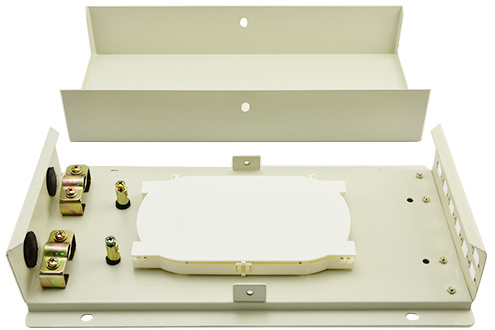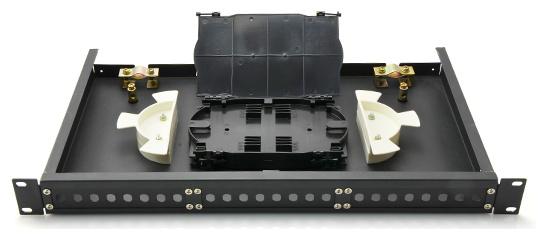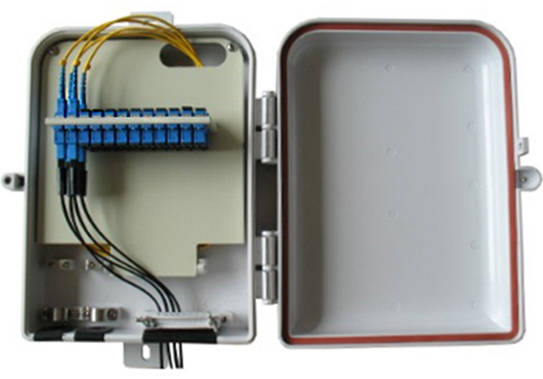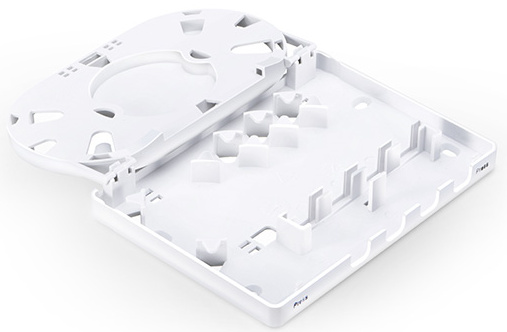FTTx network architecture is now widely applied to telecommunications for long distance transmission. When using the fiber optic pigtails in FTTx network, it is very essential to protect the fiber terminations since fiber joints are fragile and easily contaminated by outside pollution. In response to the problem, an equipment named fiber termination box is created to house the fiber terminations in a safer place. There are also various types of fiber termination box (FTB) solutions for different applications. This article will provide the some detailed information about them to help you select the right device for your project.
Fiber termination box provides an simple and clear way to manage the incoming and outcoming cables. Fiber bending radius is securely protected inside the box, thus signal integrity is also guaranteed. Since there is enough work room for fiber splicing and adapter patching, it is more flexible for technicians to use this device during work. Fiber termination box is a compact device offering a convenient access for installation, maintenance and subsequent termination. Fiber counts can be varied to satisfy the project requirements. When installed for different occasions, fiber termination box is also designed with different structures.
Four common types of fiber termination boxes are widely used in FTTx networks, here will introduce them one by one. Hope you can find the most suitable type for your application.
From its name, we can know that this type of fiber termination box is wall-mountable for installation. The box consists of a front door and a side door. Both adapters and splice trays can be installed inside the box. It is typically used for applications like building entrance terminals, pre-connectorized cables, cross-connects, field connector installations, telephone closets, pigtail splicing, CATV, and computer rooms.

Rack mount fiber termination box is rack-mountable to be installed into a rack mount unit. Unlike the wall mount type, rack mount box has a removable top cover which allows the access of splice tray from the upper side. It supports both cross-connect and interconnect architecture, and provides interfaces between outside plant cables and transmission equipment. Other applications including main distributions, intermediate distributions, telephone closets, CATV also supports the utilization of rack mount fiber termination box.

Splitting, splicing and terminating can all be done inside a small area of fiber splitter box for both indoor and outdoor use. Fiber splitter box is an optimal solution for network deployment in customer premises applications. It can distribute cables after installing splitters and also can draw out fiber optic cables by direct or cross-connections. Standard plug and play splitters are especially accepted inside the box.

Fiber distribution box is the branch splice closure for distribution cables in FTTx network. It is widely applied to applications of aerial OSP network, medium to low-rise MDU buildings exterior attachments, and central riser closets or stairwells attachments of mid-rise to high-rise MDUs. It is a faster and easier solution than traditional OSP closures.

The fiber capacity of fiber termination box is often varied from 2 fibers to 192 fibers. Rack mount fiber termination box is usually available with the maximum fiber capacity of 192 fibers. Fiber splice trays can be stacked on top to increase fiber capacity. Therefore, fiber termination box is also a good solution for high-density applications when multiple fibers need to be well protected.
In summary, fiber termination box is an indispensable solution for FTTx network. Protecting and managing fiber splices and fiber splitters becomes much more efficient and flexible. In addition, choosing the right type of fiber termination box will also benefit the project deployment.
